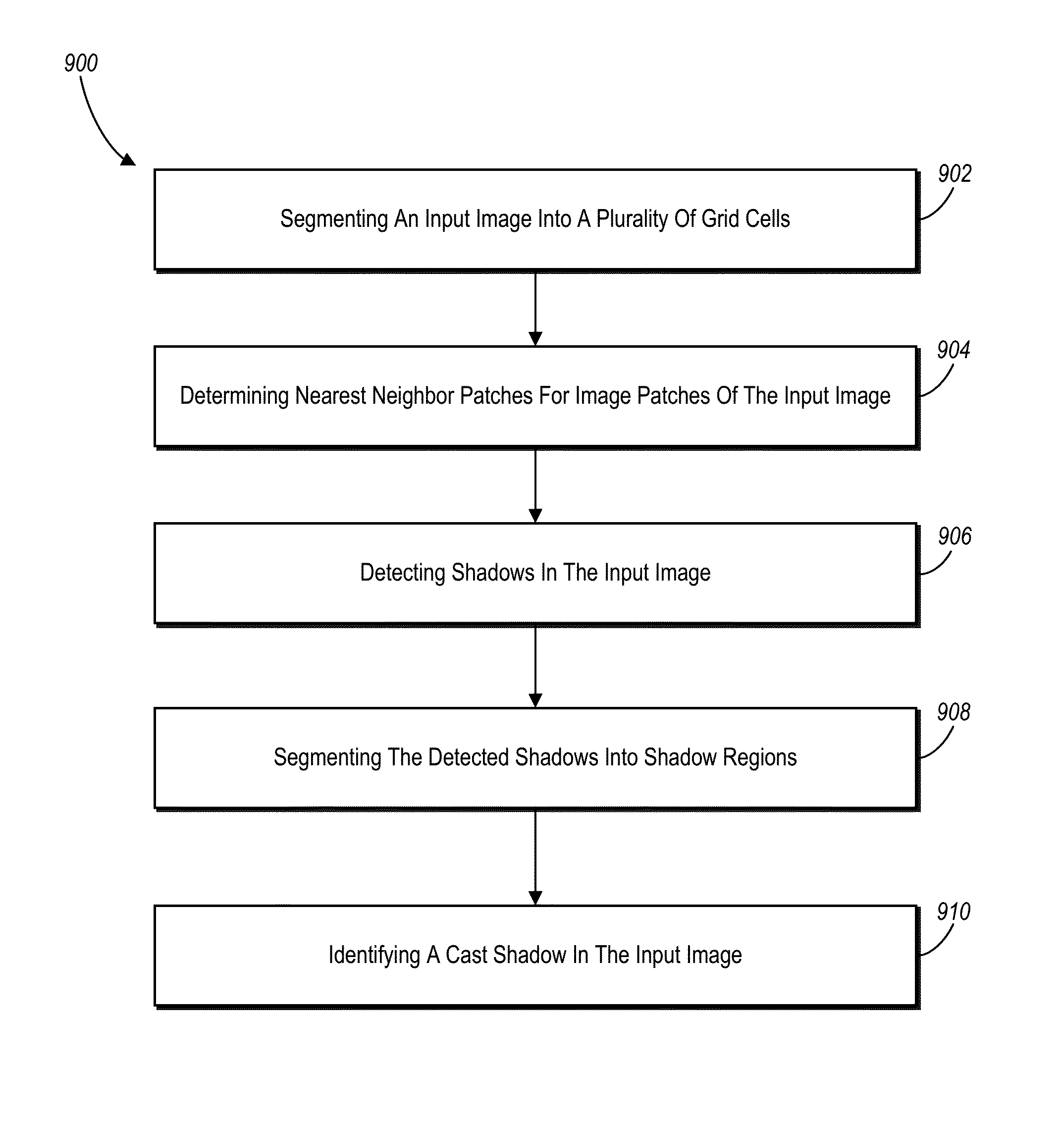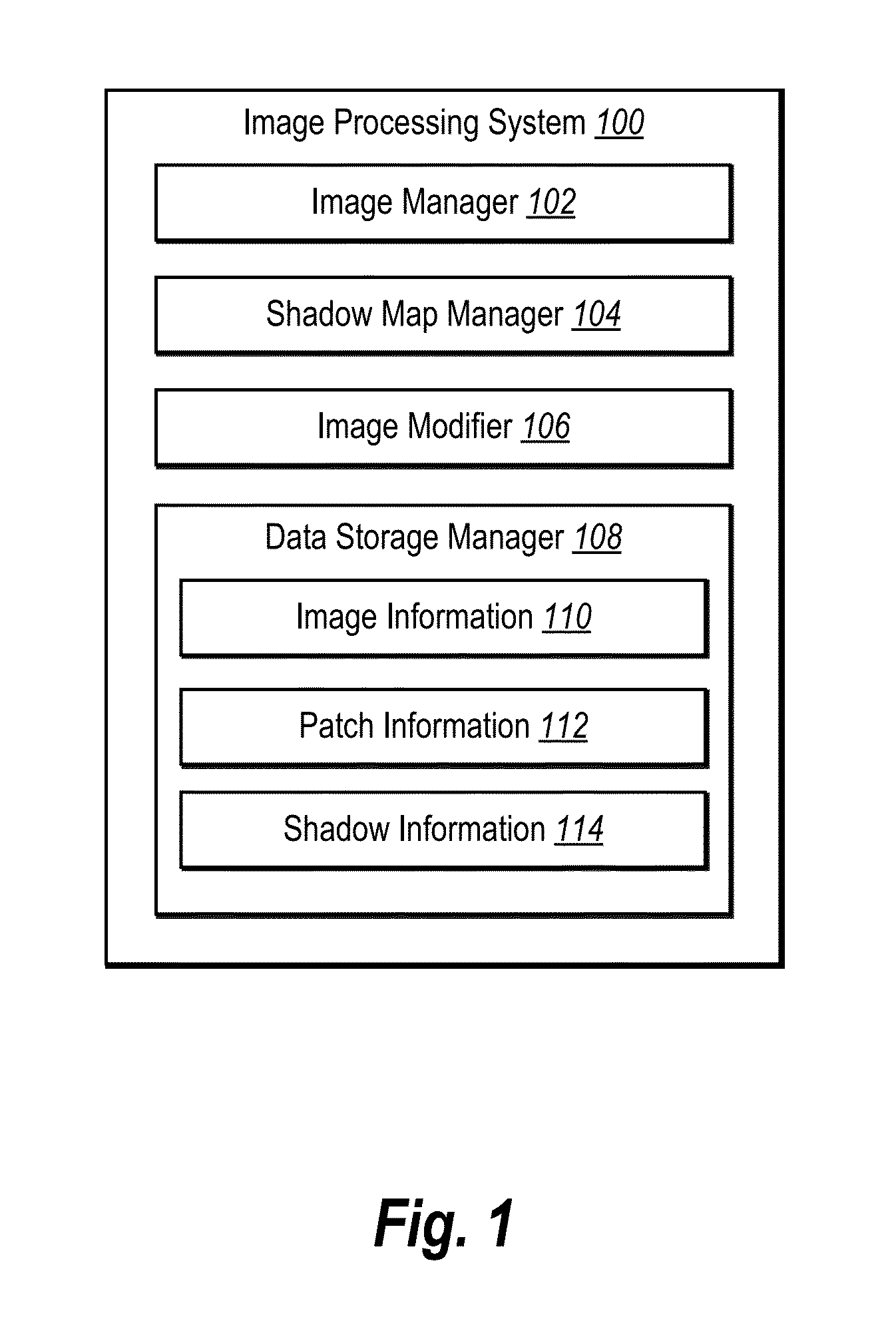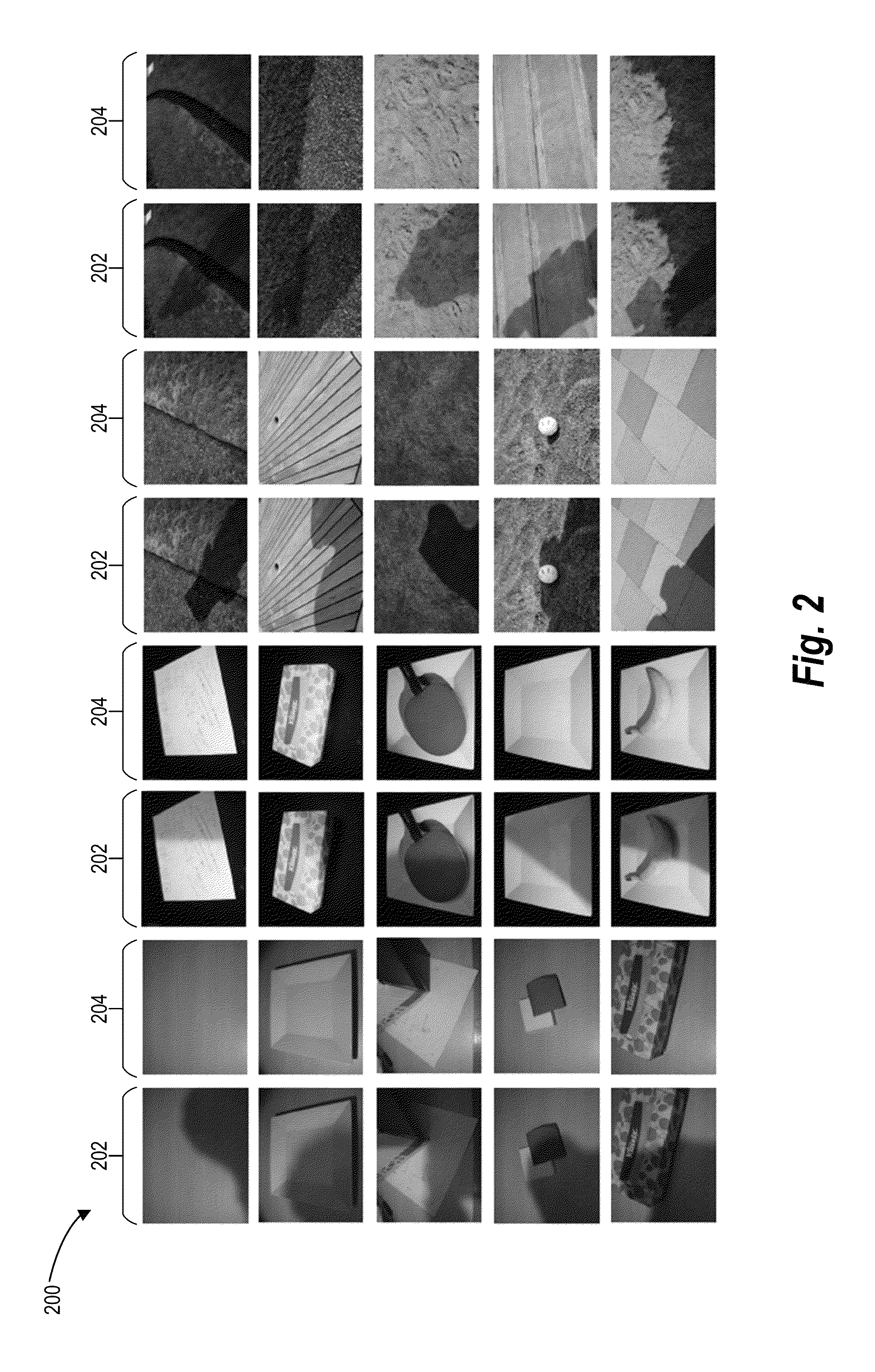Identifying and modifying cast shadows in an image
a technology of image and shadows, applied in image analysis, image enhancement, instruments, etc., can solve the problems of long shadows that interfere with the image, affecting the visual appeal of the image, and conventional image-processing systems often have difficulty in identifying cast shadows, etc., to achieve accurate identification of cast shadows, remove identified shadows automatically and accurately, and high quality results
- Summary
- Abstract
- Description
- Claims
- Application Information
AI Technical Summary
Benefits of technology
Problems solved by technology
Method used
Image
Examples
Embodiment Construction
[0025]One or more embodiments of the present disclosure include an image processing system that detects shadows in digital images without manual user input. The image processing system can also remove shadows from digital images to produce quality images. In particular, the image processing system can detect shadows in an input image based on identified visual similarities between shadowed and non-shadowed image patches within the input image. One or more embodiments of the image processing system also use the detected shadows to identify cast shadows within the image. Additionally, one or more embodiments of the image processing system remove or modify identified cast shadows from the input image. Specifically, the image processing system synthesizes shadowed image patches in the input image based on image patches in the input image and image patches from a rough estimate of the image without the cast shadow.
[0026]In one or more embodiments, the image processing system uses a patch...
PUM
 Login to View More
Login to View More Abstract
Description
Claims
Application Information
 Login to View More
Login to View More - R&D
- Intellectual Property
- Life Sciences
- Materials
- Tech Scout
- Unparalleled Data Quality
- Higher Quality Content
- 60% Fewer Hallucinations
Browse by: Latest US Patents, China's latest patents, Technical Efficacy Thesaurus, Application Domain, Technology Topic, Popular Technical Reports.
© 2025 PatSnap. All rights reserved.Legal|Privacy policy|Modern Slavery Act Transparency Statement|Sitemap|About US| Contact US: help@patsnap.com



